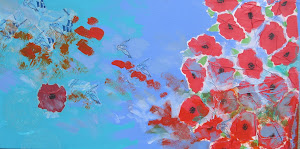

A Turkey and a Bobolink!
Welcome students, parents, teachers and friends! Here's a space to see what's new in the art room! Read about the concepts and skills we have learned, and look at sample artwork! Check back often for new and updated posts! And leave us a comment so we know you were here! Enjoy!!! -Mrs. Gonzalez (the art teacher formerly known as Ms. Weymouth!)








































